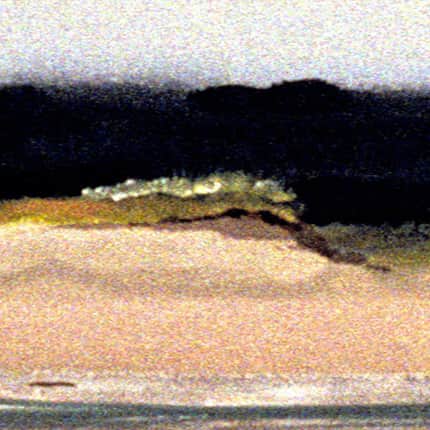Checkout


Monotyping is a type of printmaking made by drawing or painting on a smooth, non-absorbent surface. The surface, or matrix, was historically a copper etching plate, but in contemporary work it can vary from zinc or glass to acrylic covered hard board. The image is then transferred onto a sheet of paper by pressing the two together, usually using a printing-press. Monotypes can also be created by inking an entire surface and then, using brushes or rags, removing ink to create a subtractive image, e.g. creating lights from a field of opaque color. The inks used may be oil based or water based. With oil based inks, the paper may be dry, in which case the image has more contrast, or the paper may be damp, in which case the image has a 10 percent greater range of tones.
Unlike monoprinting, monotyping produces a unique print, or monotype, because all of the ink is removed during the initial pressing. Stencils, watercolor, solvents, brushes, and other tools are often used to embellish a monotype print. Monotypes are often spontaneously executed and with no previous sketch.*
History
The monotype process was invented by Giovanni Benedetto Castiglione (1609-64), an Italian painter and etcher who was also the first artist to produce brushed sketches intended as finished and final works of art (rather than as studies for another work). He is the only Italian to have invented a printmaking technique.[1] He began to make monotypes in the 1640s, normally working from black to white, and produced over twenty surviving ones, over half of which are set at night (Theseus finding the Arms of his Father, 1643). Few other artists used the technique until Degas, who made several, often working on them further after printing (Beside the Sea, 1876-7). In the twentieth century the technique became more popular.*
Comparing monotyping to monoprinting
Monoprinting and monotyping are very similar. Both involve the transfer of ink from a plate to the paper, canvas, or other surface that will ultimately hold the work of art. In the case of monotyping the plate is a featureless plate. It contains no features that will impart any definition to successive prints. The most common feature would be the etched or engraved line on a metal plate. In the absence of any permanent features on the surface of the plate, all articulation of imagery is dependent on one unique inking, resulting in one unique print.*
Monoprints, on the other hand, are the results of plates that have permanent features on them. Monoprints can be thought of as variations on a theme, with the theme resulting from some permanent features being found on the plate -- lines, textures -- that persist from print to print. Variations are confined to those resulting from how the plate is inked prior to each print. The variations are endless, but certain permanent features on the plate will tend to persist from one print to the next.*
*Wikipedia